Here’s a guide to which television features and specs are most important, and how to buy the right size TV for your expectations and budget.
Smart TV. LED. OLED. 4K. HDR. The world of TVs is looking better every day, but also more confusing. Today, there’s a ridiculously wide array of high-definition (HD) and 4K Ultra HD sets in stores, from bargain big screens to the high-end displays that distinguish the best TVs available.
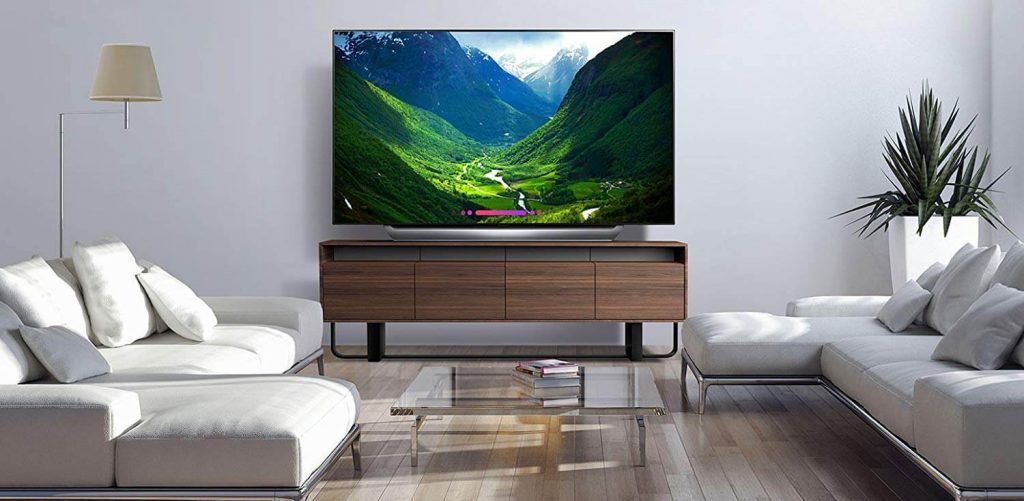
We’re here with our TV buying guide to help you decide.
TV Buying Quick Tips
If you’re in a hurry, here are the most important things to consider before you buy a television. We explain each of these points in greater detail in the text below:
- Don’t buy a TV with less than 4K resolution (i.e., avoid 1080p sets) if you want a future-proof set.
- You can skip 8K TVs (for now): The next jump in resolution isn’t a must-have yet. 8K TVs are super expensive, and you can’t even get any 8K movies yet. It’ll be at least a year before 8K TVs are even something you should consider.
- Expect to pay about $500 for a solid 50- to 55-inch bargain 4K TV and at least $900 for a 65-inch model.
- Don’t buy a TV with less than a 120 Hz refresh rate.
- Look for an HDR-compatible set, which offers more realistic colors and better contrast.
- OLED TVs look much better than a typical LED LCD, but they are considerably more expensive. For a more affordable middle ground, check out quantum dot displays from Samsung, Vizio, and TCL.
- Ignore contrast-ratio specs: manufacturers fudge the numbers. Trust your own eyes.
- Look for at least four HDMI ports, and opt for the newer HDMI 2.1 format if you can.
- Most TVs are “smart TVs” these days with easy access to Netflix and other online apps. Don’t be tricked into thinking this is a big deal.
- Plan to buy a soundbar. TV speakers are worse nowadays because the screens are thinner.
- Avoid extended warranties. Your credit card company may already provide purchase protection.
1. Screen Size: Finding the Sweet Spot
Whether you’re looking for a basic or high-performance TV, the biggest factor in your decision will probably be screen size. Consider how many people in your family typically watch at once and where you’re going to put your new set.
Then pick the largest screen size that will fit comfortably into that space and your budget. The sweet spot today, considering price, performance and the typical living room, is between 55 and 65 inches.
Screen size also depends on how close you sit to the TV. If you can see the individual pixels of the screen, you’re too close. A good rule of thumb is that you should sit at a distance from the TV that is three times more than the height of the screen for HD and just 1.5 times the screen height for 4K Ultra HD. In other words, you can sit twice as close to a 4K UHD TV.
Here’s a more in-depth guide to calculating the proper TV screen size based on the dimensions of your room, as well as the resolution of the TV.
If you have the opportunity, go to a store (and maybe bring your family) and look at the TVs. Even though 4K content is still rare, you may want that higher-resolution technology if you plan to sit close to a very large screen.
Bottom Line: Choose a screen size and resolution appropriate for the distance you will sit from the screen. We’d start at 55 inches unless you’re in a small apartment or dorm.
2. Screen Resolution: 8K, 4K or HD?
Resolution describes the number of pixels that make up the picture on a display, described in terms of horizontal rows and vertical columns. More pixels translate into the sharper picture and finer details, so higher resolution is (almost always) better.
For many years, the 1920 x 1080 resolution, also called full HD, has been the standard and is still the most common resolution in TVs across the globe. However, TV manufacturers are rapidly shifting to Ultra HD sets (also called 4K). These 4K models have four times the number of pixels as current HDTV screens. We’re talking 2,160 horizontal lines or 3840 x 2160 pixels.
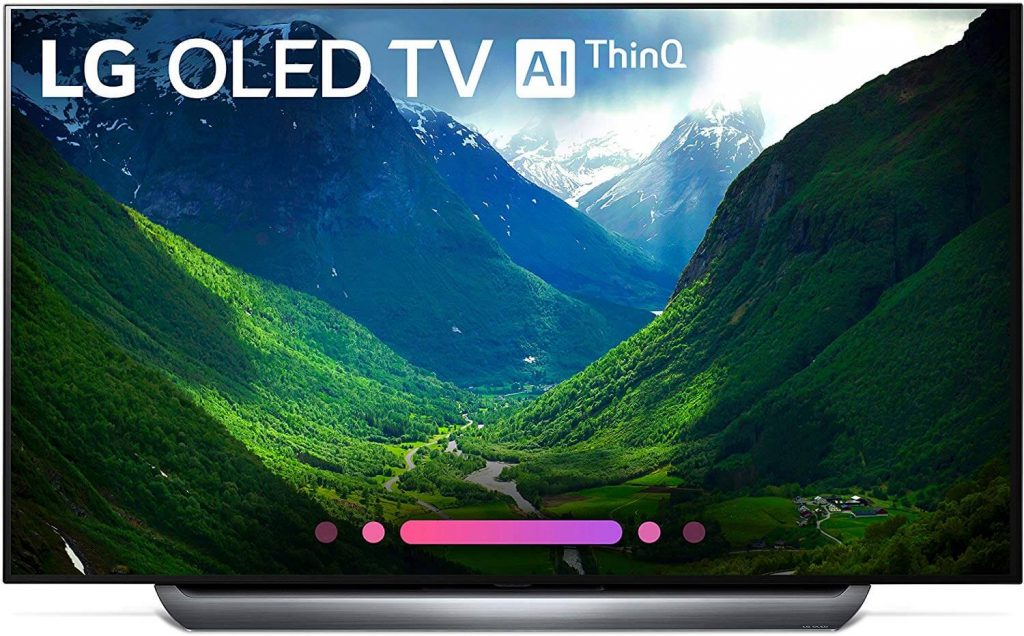
The biggest benefit of 4K TVs is that small objects on the screen have more detail, including sharper text. Overall, images appear richer and more life-like than on an HDTV, but the benefits can be subtle. The sharper picture also has the added benefit of letting you comfortably view the screen from a shorter distance, making larger TVs more comfortable to view in a regular-sized home.
Ultra HD video looks great, and it’s getting easier to find. Several streaming services, like Netflix, Amazon Video and even YouTube have started offering 4K content, making smart TVs and streaming sticks your best bet for easily finding 4K movies and shows.
While Ultra HD Blu-ray discs are becoming more common, they’re still less common than standard 1080p. Live TV hasn’t fully embraced 4K yet, but DirectTV, Dish Network and Comcast Xfinity have all started offering 4K movies. Although Ultra HD sets can upscale existing HD content, the results can be mixed and do not look as sharp as original 4K programming.
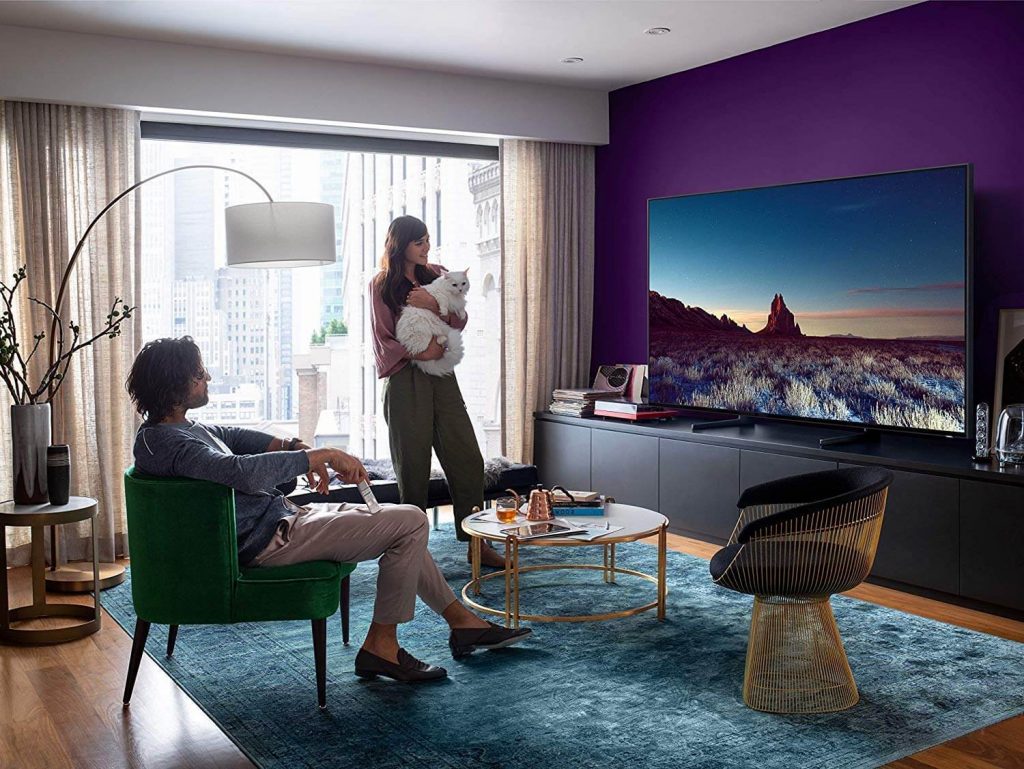
The first 8K TVs are just now coming to market, with Samsung’s Q900 8K TV arriving first, and now LG’s 88-inch Z9 OLED. These displays quadruple the resolution seen on 4K sets, offering a giant leap forward in picture quality, but finding content to fully take advantage of that higher resolution is extremely limited. It’ll be at least a year or two before 8K sets are recommended for anyone but the earliest of adopters, so we recommend sticking to 4K.
Bottom Line: Ultra HD resolution, also called 4K, is increasingly becoming the standard, and it’s a better choice if you want to future-proof your investment. Higher-resolution 8K TVs are coming to the market, but it’s not worth buying yet.
3. HDR: Get It If You Want the Most Colors
HDR is a new feature of 4K Ultra HD sets and it stands for high dynamic range, a reference to its ability to deliver more colors, more contrast levels, and increased brightness.
HDR is essentially an upgrade of the 4K, or Ultra HD, format (it does not apply to 1080p HD sets). For this new feature, TV makers are christening new monikers for the sets to distinguish them from standard 4K Ultra HD TVs.
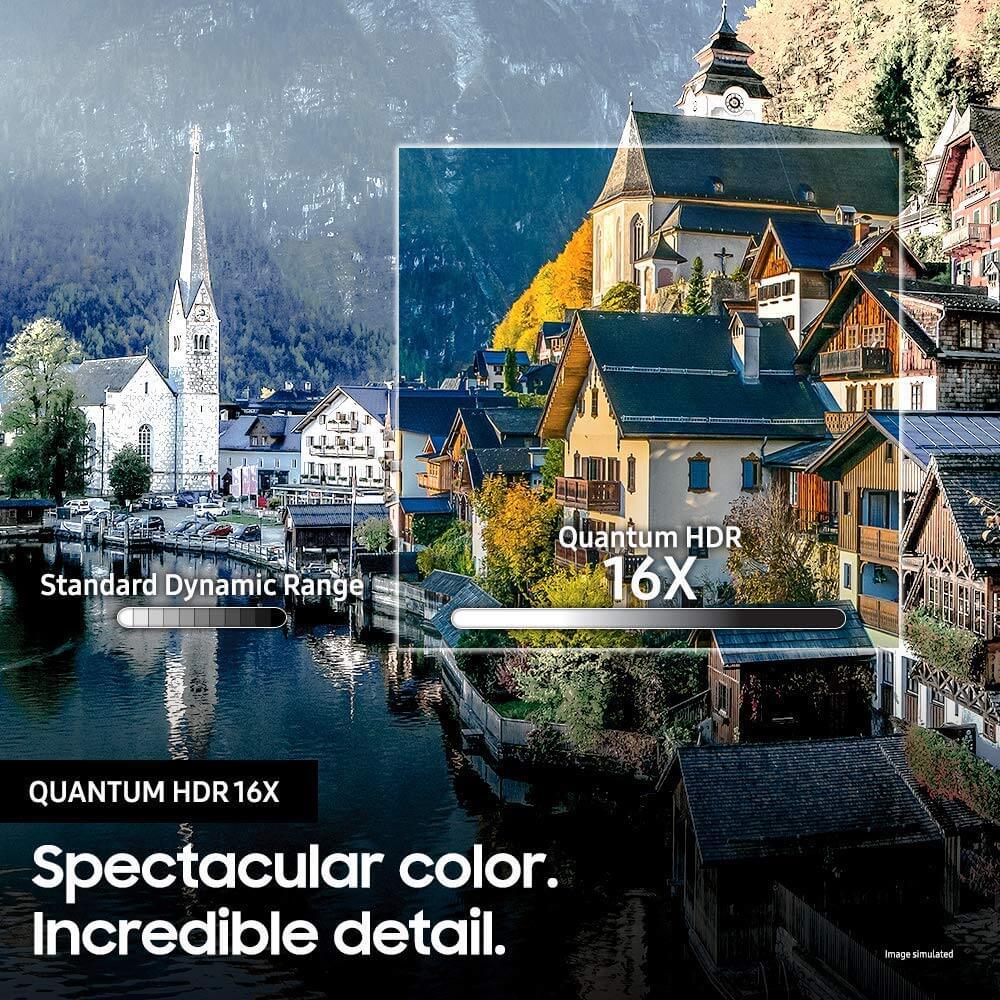
The basic standard for high-dynamic-range content is called HDR10, as set forth by the UHD Alliance, an industry trade group. Dozens of companies are supporting this basic minimum specification for HDR compatibility, so you will see “HDR10” or “Ultra HD Premium” on a growing number of sets this year.
Dolby Vision is a more demanding version of HDR, created and licensed by the folks that brought us Dolby noise reduction and surround sound. In theory, a Dolby Vision set has to meet a stricter set of criteria to display HDR content, and our testing seems to bear this out. So far, Dolby Vision has led the industry in terms of proprietary HDR formats.
There continues to be some HDR confusion. Every HDR-enabled set on the market is currently HDR10-compatible, but Dolby Vision is only found on sets that both meet Dolby’s technical standards and pay licensing fees for the standard. Nonetheless, Dolby Vision has quickly become the industry standard for HDR content and can be found on premium models from most brands (including LG, Sony, TCL, and Vizio).
Samsung has introduced its premium HDR format, called HDR10+, for all of its smart TVs. (Yes, Samsung’s naming makes things very confusing.) While the HDR10+ format offers a great viewing experience, it’s far less common than Dolby Vision, with HDR10+ content offered on Amazon Prime Video and a handful of UHD Blu-rays.
Even more troublesome, many UHD Blu-ray players don’t support HDR10+ at all, so your options are even more limited if you want to go all-in on Samsung’s proprietary HDR format. You’ll still be able to enjoy the more basic HDR10 format through any HDR-capable player or TV, but HDR10+
Both Technicolor and IMAX have also brought their proprietary standards to the market, called Technicolor Advanced HDR and IMAX Enhanced, respectively. It’s still far too soon to know if either of these newer formats will have much impact on the market.
There’s not much HDR programming available, but it’s starting to look a bit better. There are a few dozen movies in the new 4K Blu-ray disc format, with a growing number of HDR shows available via streaming services, like Amazon Prime and Netflix.
Some new 4K Blu-ray players also promise to be upgradable to handle the new HDR discs but check before you buy. Finally, cable and satellite have their form of HDR, called Hybrid-Log Gamma (HLG), so you should start seeing HDR pop up now and then for movies and even live TV.
Bottom Line: Don’t choose a set just for its HDR support because the standard has not yet been settled. However, if you want the best, buy an HDR set that is compatible with Dolby Vision, as that format seems to be gaining momentum.
4. Refresh Rate: Faster is Better
The refresh rate, expressed in Hertz (Hz) describes how many times per second a picture is refreshed on the screen. The standard refresh rate is 60 times per second or 60 Hz. However, in scenes with rapidly moving objects, a 60 Hz refresh rate can make things look blurry or jittery, particularly on LCD HDTVs. So, to create a more solid picture, manufacturers doubled the refresh rate to 120 Hz (and in some cases up to 240 Hz).
Since there aren’t that many per-second images in original video content, TVs handle the faster refresh rates in different ways. One method is to simply insert black images between the original pictures, tricking the viewer’s eyes into seeing a less blurry, more solid picture.
Another technique is to generate and insert new images showing a state of movement in between the two adjacent pictures to display more realistic-looking motion. However, depending on how the video-processing is done, it can make a movie or sitcom look flat, or as if it were a poorly lit, old-time soap opera.
Some new models are boasting High-Frame Rate (HFR) support, which means that they have both a higher refresh rate and added support for content with higher than 60 Hz frame rates. With HFR content set to come from both movies and live broadcasts, HFR will be especially good for live sports it’s a feature to watch for in 2019.
Gamers will be especially keen to get higher refresh rates, but if you’re using a gaming console, 60 Hz is the sweet spot. Most gaming consoles top out at 60 frames per second, and even the best 4K TVs for gaming offer the best performance well below the 120 Hz we suggest for other content.
A word of caution: beware of terms like “effective refresh rate,” which means the actual frame rate is half the stated rate (e.g., a “120 Hz effective refresh rate” is a 60 Hz refresh rate).
Bottom line: Gamers will get a lot from a 60Hz TV, but most TV shoppers shouldn’t buy a TV with less than a 120 Hz refresh rate.
5. HDMI and Connections: Go for More
It may seem like an afterthought, but pay attention to the number of HDMI inputs a set has. Manufacturers looking to shave costs may offer fewer HDMI plugs on the back. These ports can get used up quickly: Add a soundbar, a Roku or Chromecast, and a game console, and you’ve used three ports already.
If you have decided to take the plunge and get a 4K Ultra HD, make sure the set’s ports support HDMI 2.0 to accommodate future Ultra HD sources. Many TVs on the market have only one port that supports the 4K copy-protection scheme known as HDCP 2.2 (high-bandwidth digital content protection).
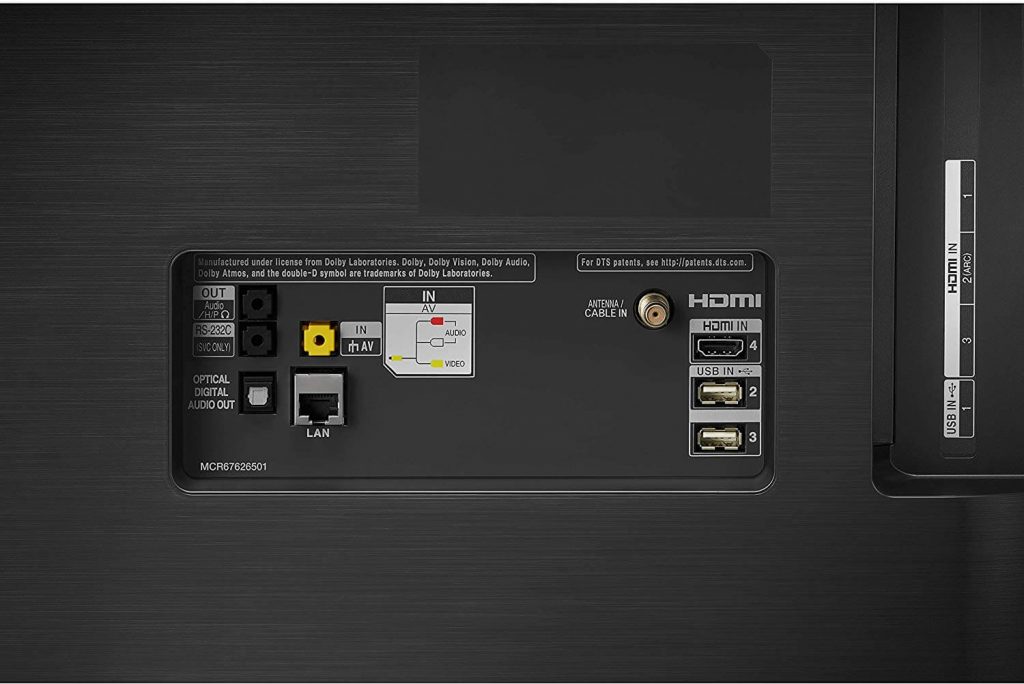
The newer HDMI 2.1 format has started cropping up on TVs in 2019, and while the biggest benefits of the new standard will be seen in delivering 8K content, there are still plenty of goodies coming to 4K sets. The biggest improvement is the variable refresh rate (VRR) support, which introduces the same sort of frame rate matching seen in Nvidia’s G-Sync and AMD’s FreeSync technologies.
By matching the TV refresh rate to the frame rates of your content source – in this case, the graphics card inside your game console or PC – you’ll get smoother action and zero screen tearing. It also adds higher frame rates for 4K video and richer HDR data that will allow adjustments at the scene level for more-precise backlighting control.
As of now, we’ve seen HDMI 2.1 capability popping up on LG’s 2019 TVs, such as the LG C9 OLED, which uses the faster standard for all four of its HDMI ports.
Bottom Line: Look for at least four HDMI ports, and opt for the newer HDMI 2.1 format if you can.
6. TV Types and Jargon Explained: LCD, LED LCD, OLED
Aside from projection sets, there are only two types of TVs on the market: LCD and OLED. Unless you have a lot of disposable income, you’ll probably be buying an LCD TV.
LED and LCD Sets
The lion’s share of televisions today are LED LCD. These HD and Ultra HD sets use light-emitting diodes (LEDs) to illuminate the LCD screen and can be extremely thin. Many of these TVs can dynamically light up specific portions of the screen and dim other parts to better represent a mix of light and dark areas in a scene a feature known as active dimming or local dimming. No-frills LED LCD sets can be had for as little as $200 for a 32-inch screen, while a top-of-the-line 90-inch model can go for $8,000.
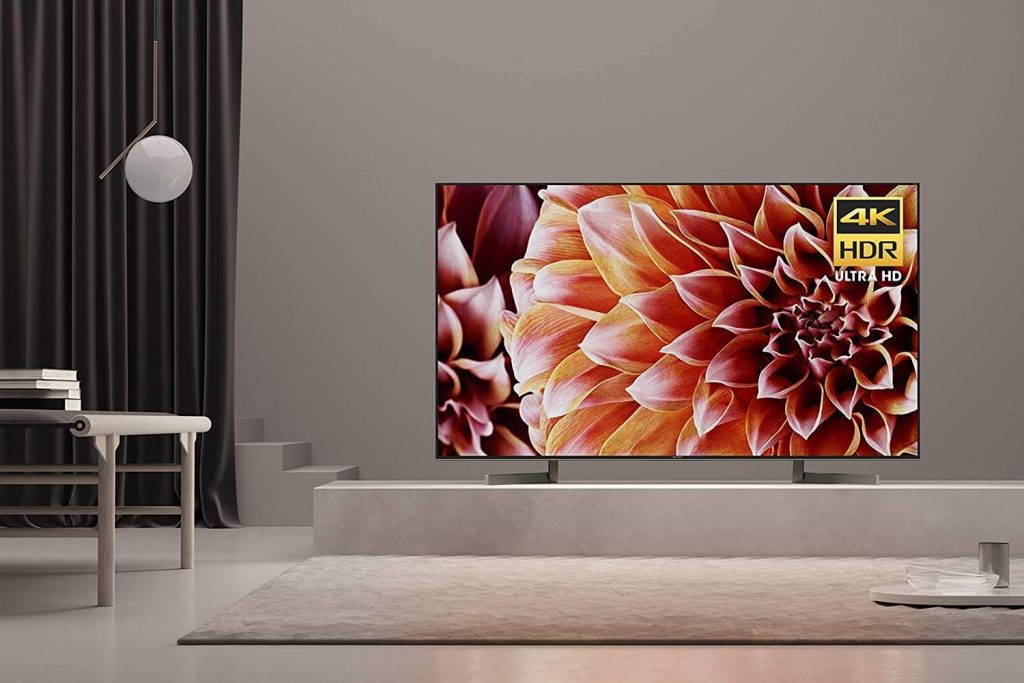
Most LCD sets use LEDs on the edge of the screen. The better of these models support active dimming, but it takes some digital sorcery to do this by merely manipulating lights along the edge.
Full-array LED sets to have light-emitting diodes directly behind the screen, in a grid of “zones” that can be lit up or darkened individually. Such an arrangement makes the backlight more precise and allows a more-detailed picture regarding contrast. Full-array backlighting was once reserved for top-tier models, but with more Ultra HD sets appearing at lower prices, this feature is becoming more common on modestly priced sets.
Another LCD technology, called quantum dots, is becoming more common, spurred on by the requirements of HDR to produce a wider array of colors and more brightness. An LCD that uses quantum dots has another layer or added “rail,” of different size nanocrystal dots that light up when the LED backlight hits them. The result is a wider color spectrum and increased brightness.
Be aware that some brands offer confusing labels. The biggest offender is the name “QLED”, featured prominently on Samsung’s premium sets and coming to TCL’s 2019 models this fall. These are quantum-dot LCD TVs with LED backlighting not to be mistaken for OLED.
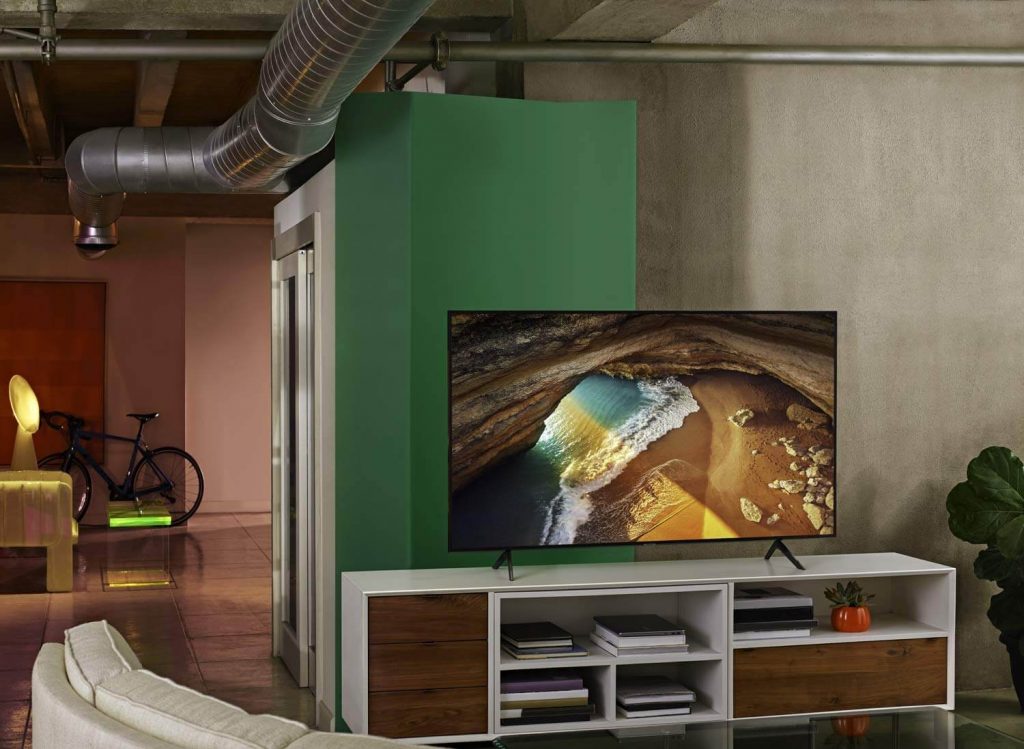
And while quantum dot displays still can’t match the true black levels of OLED, the gap is narrowing as manufacturers work to improve the technology. For an affordable middle ground between basic LCD and pricey OLED displays, quantum-dot enhancement is a smart way to go.
Pros: Wide array of prices, sizes, and features; Some affordable Ultra HD 4K models; Bright screens visible even in a sunny room; Image quality steadily improving with full-array backlighting and quantum-dot technology.
Cons: Exhibits imperfections when displaying rapid motion, as in sports; Loses some shadow detail because pixels can’t go completely black (even with full-array backlighting); Images fade when viewing from the side (off-axis).
OLED TVs
OLED TVs go one better than full-array LED-LCDs with a few dozen lighting zones. In place of a backlight, OLEDs use a layer of organic LEDs, controlled at the pixel level, to achieve absolute black and stunning levels of contrast. (Footage of fireworks against a black sky is a favorite demonstration of OLED technology.)
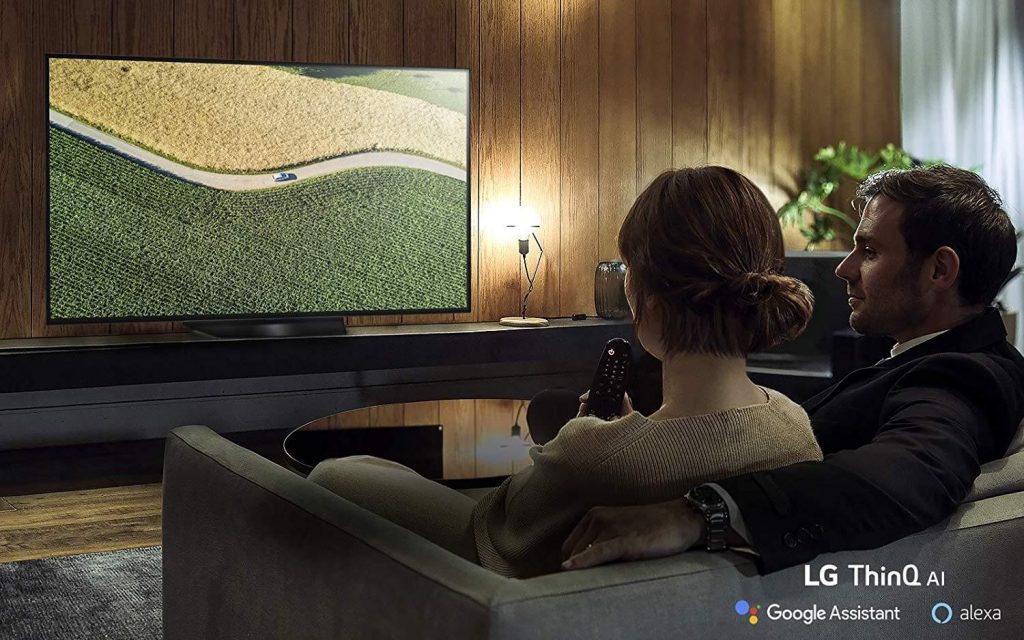
LG isn’t the only company actively pursuing OLED technology in large screen sizes, with Sony offering premium OLED sets as well. The best-in-class display technology is seen exclusively on 4K sets (and higher, with the introduction of LG’s 8K OLED), and range in size from 55 inches on up to 75 inches or larger. But OLED has also gotten much more affordable, with 55-inch models selling for less than $2,000, and 65-inch models selling in the $2,000-3,000 range.
Pros: Best TV picture, bar none; Colors truly pop, deeper blacks and better contrast and shadow detail than LCD TVs achieve; Retains image quality when viewed from the side.
Cons: Premium prices; lower peak brightness than some LCD sets, uncertainty about how screens will fare over time, including whether they will retain “ghost” images (also known as burn-in) from displaying a static picture for too long.
7. 8K Resolution: Hold Off
If you thought the jump to 4K resolution was amazing, you’ll be floored by 8K, which ratchets up the detail even further with 7680 x 4320 pixels. It’s amazing to see, and it’s the next big thing in consumer TVs. But it’s not worth spending your money on just yet.
TV manufacturers are betting big on 8K displays, and there’s no doubt that it’s the next big thing in TVs. But all that eye-popping detail is still missing an essential element: Content. There are no 8K movies available for purchase, and streaming in 4K is already more taxing than many people’s internet connection can handle.
So far, companies are hoping that fancy AI-powered upscaling will make everything look good enough to justify prices that far outstrip the cost of premium 4K sets. The 8K models on the market are several thousand dollars more than the top 4K models, like Samsung’s 85-inch Q900R QLED 8K TV, which has a MSRP of $14,999(US)/£14,999(UK), or LG’s 88-inch Z9 8K OLED, which sells for $29,999(US)/£29,999(UK).
Bottom Line: You can leave the pricey 8K TVs to the early adopters. Until the content is available, you’ll just wind up paying a lot of money for an upscaled 4K video.
8. Smart TVs: Most Already Are
An increasing number of sets come with built-in Wi-Fi for connecting Internet-based services like Netflix for streaming videos or to run apps for watching special-interest programs, downloading on-demand movies, playing games or even posting to Facebook. The latest models can even search for content across streaming services and live to program on cable and satellite.
The interfaces are generally getting better. Vizio, LG and now Samsung use a handy bar of icons at the bottom of the screen. Roku offers its famously intuitive interface in budget TVs from Hisense, TCL and other inexpensive brands.
Google provides its Android TV platform to companies such as Sony and Westinghouse, and Amazon has jumped into the mix with Amazon Fire Edition TVs from Toshiba and Insignia (Best Buy’s brand). While most smart TVs include the major services, such as Pandora, Hulu, and Netflix, check to make sure the TV you buy has the options you want. Our guides to common questions about smart TVs and comparison of smart TV platforms are good places to start.

Streaming apps available on smart TVs are also one of the best ways to find and enjoy 4K and HDR content. With movies and shows offered by services from Amazon, Hulu, Netflix, and YouTube, it’s quick and easy to find both 4K resolution and HDR-enabled content easier than finding Blu-rays with the desired formats. The only concern is whether your internet connection can provide enough bandwidth.
But not all smart TVs are created equal. Many budget-friendly brands will offer smart TV functionality without naming the actual platform that they use. In these cases, expect to run into limitations. Off-brand smart platforms frequently suffer from severely limited app selection, sub-par performance, and gaping security holes.
In the past, you could have bought a less expensive “dumb” TV and made it smart with a streaming device like the $50 Roku Streaming Stick. But nowadays, it’s hard to get a TV that isn’t smart, even if you’re going for a small bargain model. Find out more about the functions and features in our guide to smart TVs.
Bottom line: Smart capability is becoming a standard feature in TVs, so it’s less and less of a factor in your buying decision.
9. Contrast Ratio: Unreliable Numbers
The contrast ratio describes the range of brightness levels a set can display. Better contrast ratios display more subtle shadows and hues, and thus better detail. However, the way manufacturers measure such ratios varies widely. Indeed, the specification has been so thoroughly discredited that if a salesperson uses it as a selling point, you should shop somewhere else.
We use the same method for examining contrast ratios in all the TVs we test, so we can say roughly how well they compare to each other. Nevertheless, it’s still best to see for yourself how a TV displays shadow detail by finding a movie with dark scenes and seeing how well it reveals detail in the shadows of, say, a Harry Potter movie. Experiment with the TV’s brightness, sharpness, and other picture settings before making a final judgment. (Hint: select “movie” or “cinema” mode on the TV.)
The best TVs will have deep, dark black levels while less expensive displays glow with a dark gray, even when they should be showing black. These grays are called “elevated black levels” and are a common problem on less premium LCD TVs.
Bottom line: You can ignore manufacturers’ contrast-ratio specs since they are not comparable across brands. Instead, look for deep black levels and minimal haloing around high contrast objects.
10. Audio: Get a Soundbar
Even the finest, most expensive HDTVs have an Achilles’ heel: poor sound. It’s a consequence of the svelte design of flat panels there’s not enough room for large speakers that produce full, rich sound. So, you have three choices: Use headphones (which can make you seem antisocial), buy a surround-sound system (which can be a hassle to set up and produces clutter) or get a soundbar.
Soundbars are popular because, for $300 or less, they can significantly improve the cinematic experience and yet be installed in minutes. Check out our top soundbar picks. Newer models are thin enough to fit under a TV stand without blocking the bottom of the picture. Most can also mount under a wall-hanging TV. Several companies also offer sound boxes or stands that can slide under a set.
Some TVs and soundbars also support Dolby Atmos, a newer audio standard from Dolby that includes overhead sound for a fuller listening experience. While you can get the Atmos effect using in-ceiling speakers, many soundbars have Atmos audio processing and upward-firing speakers built-in to create more realistic sounding audio that doesn’t require the multiple speaker placement that you’d have with 5.1 or 7.1 Surround Sound.
And don’t stress about additional cable clutter. Nearly all current TVs feature at least one HDMI port with Audio Return Channel (ARC) capability. This standard HDMI feature provides lets you use HDMI as both an input and an audio output, letting you not only send audio to the TV from your external media devices but also out to your soundbar. That ARC connection means that you get great sound for all your devices, with no special receiver needed.
Bottom Line: Movies and sports benefit from the addition of a soundbar.
11. Extended Warranties: Save Your Money
One of the biggest revenue generators for big-box electronics stores is the extended warranty. Why? Because they are so rarely needed, especially for a flat-panel LCD set. Most of the components in an HDTV are remarkably resilient; even the LEDs used to light the picture are virtually shockproof.
So, if you do get a lemon, it’s likely to be apparent immediately or at least within the first 30 days of ownership a period usually covered by a regular store-return policy. Beyond that, most manufacturers offer a one-year warranty. Credit card companies may offer additional automatic coverage on purchases, so check with your provider.
Bottom Line: Save your money and contact your credit card company to see if it has a price protection policy.
Pay the Right Price: Bargains are Out There
While you’ll always get the latest features and best capabilities by paying full price, a lot of shoppers are holding off because they think current TVs are too expensive. The reality is that TVs have not only never been better, they’ve also never been this affordable.
While premium models can easily run upwards of $2,000, there are plenty of great TVs complete with all of the 4K resolution, HDR support and smart features we recommend for much less. You can still get a solid bargain on a 50- to 55-inch TV for under $500, and 65-inch models can be found for under $1,000.
Even better, there’s almost always a great sale coming up, and if you’re willing to make some small concessions, you can save thousands of dollars when you buy your next TV.
Leave a Reply